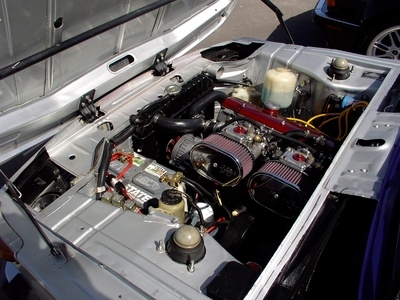
ATF Z-1 is an automatic transmission fluid manufactured by Idemitsu Lubricants American for Honda. It can be used in four-cylinder as well as six-cylinder Honda engines. According to Honda, "Always use Honda ATF-Z1. If it's not available you may use a DEXRON III automatic transmission fluid as a temporary replacement. However, continued use can affect the shift quality. Have the transmission flushed and refilled with Honda ATF-Z1 as soon as it is convenient."
Honda ATF Z-1 transmission fluid is a clear red, oily liquid with a mild chemical odor. The flashpoint of the fluid is 338 degree Fahrenheit, or 170 degrees Celsius. It has a density of .85 grams per cubic centimeter at a temperature of 15 degrees Celsius. It has a viscosity of 29.49 centistrokes at 40 degrees Celsius and at a higher temperature of 100 degree Celsius the fluid viscosity becomes 7.058 cSt. ATF Z-1 is stable under regular temperature and pressure conditions, but heat, flames and sparks near the open fluid should be avoided. Strong oxidizing chemical agents are incompatible with this transmission fluid.
Check the automatic transmission fluid level while the engine is off and is at normal operating temperature. Ensure the vehicle is on level ground. Remove the automatic transmission fluid dipstick from the transmission and wipe it dry with a clean cloth. Reinsert the dipstick all the way into the reservoir and then remove the dipstick. The fluid level should be between the lower and upper notches on the dipstick. If the fluid level is below the lower mark, remove the fill plug and slowly pour in additional automatic transmission fluid until the fluid level is at the upper mark. Avoid spilling fluid in other engine components as this could cause engine damage. Clean up any spilled fluid.
Honda's ATF Z-1 contains a hazardous component known as Cresol Compound. Even though the American Conference of Governmental Industrial Hygienists classifies this as an A4 carcinogen, meaning it is not classifiable as a human carcinogen, precautions should be made when handling this chemical. Time-Weighted Average measures the exposure of an individual to a specific chemical over a period of time; the TWA for Cresol Compound is 2 milligrams per cubed meter. Recommended protective equipment when handling the fluid are safety glasses with side-shields as well as impervious clothing and impervious gloves.
If the fluid gets in your eyes, wash them out, including under the eyelids, for at least 15 minutes. If fluid gets on skin, rinse and wash skin with soapy water and remove soiled clothes. If over-inhalation occurs, move to an area with fresh air. If ingested, do not induce vomiting until consulting a physician or poison control. If any symptoms persist, consult a physician. At higher temperatures, vapors from the fluid can cause eye or respiratory irritation.